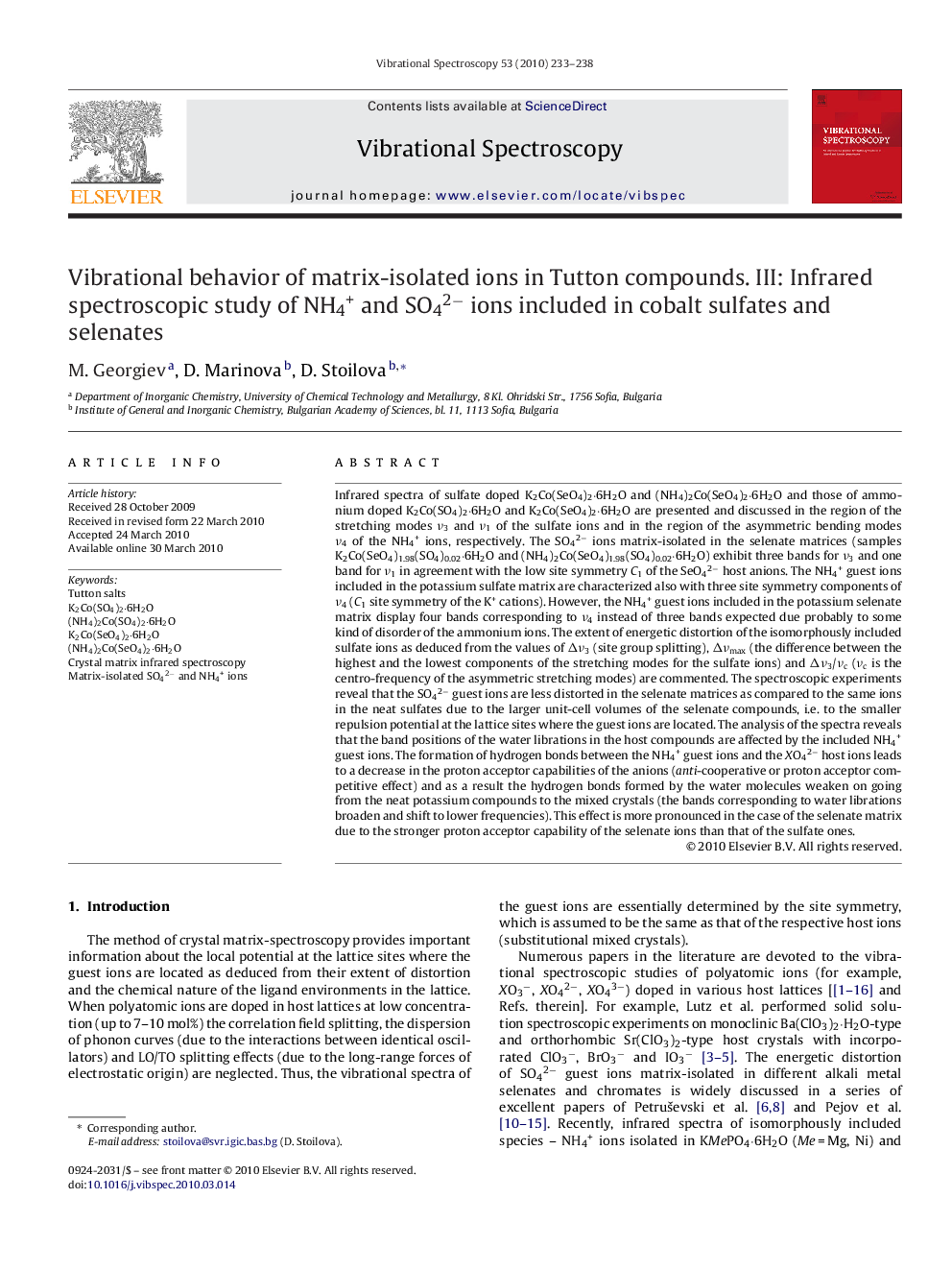| Article ID | Journal | Published Year | Pages | File Type |
|---|---|---|---|---|
| 1249673 | Vibrational Spectroscopy | 2010 | 6 Pages |
Infrared spectra of sulfate doped K2Co(SeO4)2·6H2O and (NH4)2Co(SeO4)2·6H2O and those of ammonium doped K2Co(SO4)2·6H2O and K2Co(SeO4)2·6H2O are presented and discussed in the region of the stretching modes ν3 and ν1 of the sulfate ions and in the region of the asymmetric bending modes ν4 of the NH4+ ions, respectively. The SO42− ions matrix-isolated in the selenate matrices (samples K2Co(SeO4)1.98(SO4)0.02·6H2O and (NH4)2Co(SeO4)1.98(SO4)0.02·6H2O) exhibit three bands for ν3 and one band for ν1 in agreement with the low site symmetry C1 of the SeO42− host anions. The NH4+ guest ions included in the potassium sulfate matrix are characterized also with three site symmetry components of ν4 (C1 site symmetry of the K+ cations). However, the NH4+ guest ions included in the potassium selenate matrix display four bands corresponding to ν4 instead of three bands expected due probably to some kind of disorder of the ammonium ions. The extent of energetic distortion of the isomorphously included sulfate ions as deduced from the values of Δν3 (site group splitting), Δνmax (the difference between the highest and the lowest components of the stretching modes for the sulfate ions) and Δν3/νc (νc is the centro-frequency of the asymmetric stretching modes) are commented. The spectroscopic experiments reveal that the SO42− guest ions are less distorted in the selenate matrices as compared to the same ions in the neat sulfates due to the larger unit-cell volumes of the selenate compounds, i.e. to the smaller repulsion potential at the lattice sites where the guest ions are located. The analysis of the spectra reveals that the band positions of the water librations in the host compounds are affected by the included NH4+ guest ions. The formation of hydrogen bonds between the NH4+ guest ions and the XO42− host ions leads to a decrease in the proton acceptor capabilities of the anions (anti-cooperative or proton acceptor competitive effect) and as a result the hydrogen bonds formed by the water molecules weaken on going from the neat potassium compounds to the mixed crystals (the bands corresponding to water librations broaden and shift to lower frequencies). This effect is more pronounced in the case of the selenate matrix due to the stronger proton acceptor capability of the selenate ions than that of the sulfate ones.
